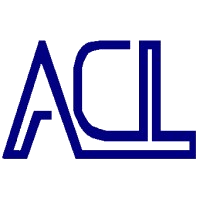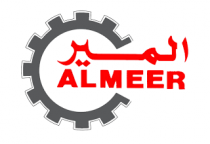HPPs (Organic, Inorganic, and Hybrid) Markets - Global Forecast to 2024 - ResearchAndMarkets.com
The "HPPs Market by Type (Organic, Inorganic, and Hybrid), Application (Coatings, Plastics, Inks, Cosmetics), End-use Industry (Automotive & Transportation, Construction & Infrastructure, Printing, Industrial), and Region - Global Forecast to 2024" report has been added to ResearchAndMarkets.com's offering.
The HPPs Market Size is Projected to Grow from USD 5.2 Billion in 2019 to USD 6.4 Billion by 2024, at a CAGR of 4.3% Between 2019 and 2024.
The growing number of commute vehicles in roadways, airways and waterways and growth in construction & infrastructure buildings is driving the growth of the HPPs industry. The HPPs have superior properties over conventional pigments and offer high weather resistance, corrosion resistance, and color durability. The growing urbanization, the increasing spending power, and demand for long-lasting colors have driven the market for HPPs.
Organic HPPs are the fastest-growing raw material of HPPs in terms of value.
Organic HPPs are projected to register the highest CAGR in terms of value between 2019 and 2024. Organic HPPs contain carbon chains and carbon rings and consist of elements that pose less threat to the environment. They also offer better brightness and are high in chroma and thus offer a more glossy effect to the applications.
Coatings is the fastest-growing application of HPPs, in terms of value.
Coatings application is the fastest-growing application owing to its wide demand in automotive & transportation, construction & infrastructure, and industrial end-use industries. The use of HPPs are used in coatings application due to their properties such as good weather and light fastness, low migration, and solvent and bleeding fastness. The HPPs are applied as a coating on various exterior and interior parts of these end-use industries.
Automotive & transportation is the fastest-growing end-use industry of HPPs, in terms of value.
The HPPs in different modes of commutation are used to enhance the aesthetic looks and make paints more durable. HPPs are used in cars, trains, airplanes, and ships. The future of the automotive industry is driven by high-end luxury cars, electric vehicles, battery electric vehicles, plug-in electric vehicles, and others. Also, the number of aircraft, ship and railway deliveries would increase during the forecast period. The increase in the number of cars, trains, airplanes, and ships would further drive the penetration of HPPs in the automotive & transportation industry.
APAC is the fastest-growing HPPs market.
APAC is projected to register the highest CAGR in terms of value and volume in the global HPPs market during the forecast period. The demand for HPPs in APAC would grow majorly due to the increasing use of coatings applications in the construction & infrastructure and automotive & transportation industries. There is a strong impetus to accelerate the building and construction growth in the APAC.
The investments made by the government for smart cities and inter-regional collaboration between ASEAN & China for construction & infrastructure growth would further strengthen the position APAC as one of the fastest-growing regions of the world. In addition, the growth in the automotive & transportation industry would be spurred by the rise in the number of electric vehicles, thereby increasing the demand for HPP coatings.
Market Dynamics
Drivers
- High Demand From Construction & Infrastructure and Aerospace Industries in APAC
- Superior Properties of HPPs
Restraints
- Increased Pricing Pressure From China
- Lack of Quality Control Across Developing Countries
Opportunity
- Increase in Production of Environmentally Friendly Products in Europe
Challenges
- US-China Trade War and Environmental Protection Program in China
- Brexit to Negatively Impact the Automotive and Construction Industries in the UK
The report provides a comprehensive analysis of company profiles listed below:
- BASF SE (Germany)
- Clariant (Switzerland)
- DIC Corporation (Japan)
- Ferro Corporation(US)
- Lanxess (Germany)
- Heubach GmbH (Germany)
- Venator Materials PLC (UK)
- Sudarshan Chemical Industries Limited (India)
- Atul Ltd. (India)
- Synthesia A.S. (Czech Republic) (UK)
For more information about this report visit https://www.researchandmarkets.com/r/cimhb3
View source version on businesswire.com: https://www.businesswire.com/news/home/20191113005641/en/




